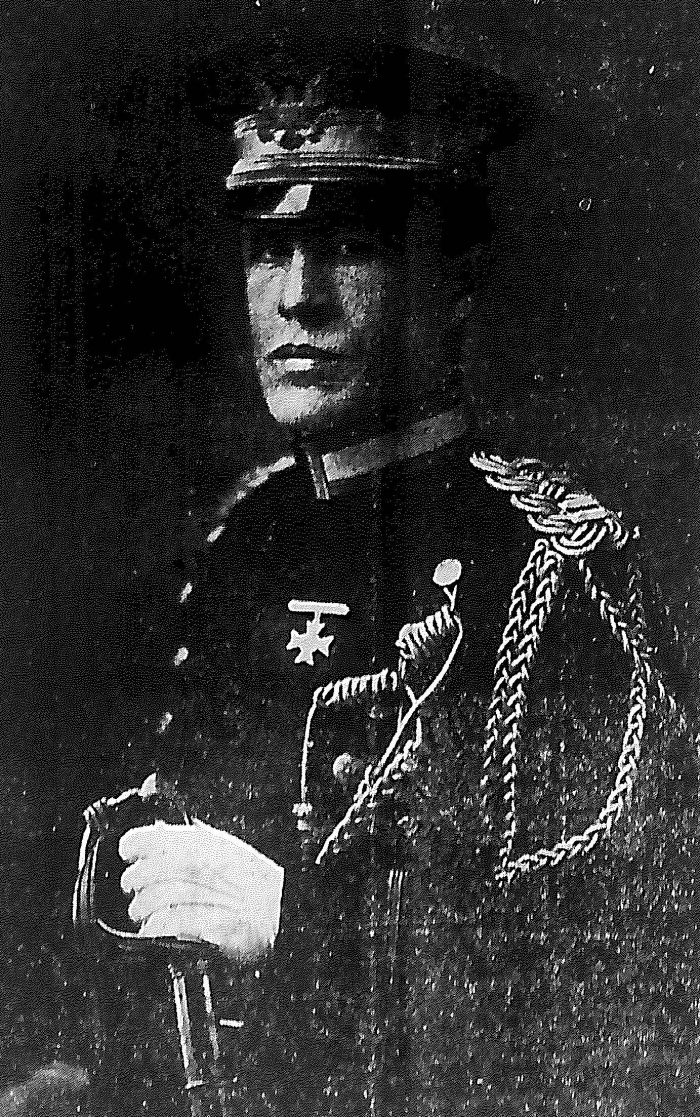June 28, 1918
The Pawhuska Capital
Microfilm Roll: MN00328

On this day in Osage country The Pawhuska Capital published an article on the accomplishments of a young and determined Osage man the then-Major Clarence L. Tinker.
Born in Osage country on November 21, 1887, Major General Clarence L. Tinker grew up attending mainly Catholic schools. By the age of thirteen, Tinker attended Haskell Institute, a tribal university in Lawrence, Kansas, but left the university in the spring of 1906 before graduating. Tinker then further pursued his educational career at Wentworth Military Academy where he graduated at the age of 20.
Thereafter, Major Clarence L. Tinker was commissioned a third lieutenant in the Philippine Constabulary. This was of course after graduating “at the top of his class” from the Constabulary School for officers at Bagueo Beguent (The Pawhuska Capital). Tinker stayed in this position for approximately four years before being promoted to the position of second lieutenant within the U.S. Army, a position suggested to him by a friend that he was at first hesitant to pursue, and subsequently was put in charge of the Twenty-fifth Infantry Division, an infantry if African American troops stationed at Ft. Lawton, Washington. It was with this division that Second Lieutenant Tinker moved to Hawaii, where he later met his wife Madeline Doyle and was promoted to first lieutenant. Tinker remained in Hawaii until 1917.
While working throughout the western and southwestern United States during World War I, the now, Major Tinker took an interest in flying. Accordingly, he learned the art of piloting, and began flight duty on July 1, 1922, after officially becoming a member of the Air Corps. After two decades of serving as major, Tinker was promoted to brigadier general in the fall of 1940. While stationed at MacDill Field near Tampa, Florida, Brigadier General Tinker was responsible for wartime strategy to protect the Panama Canal and the Caribbean from potential threats of Japanese and European assault.
After the attack on Pearl Harbor, Tinker commanded Hawaiian Department. In 1942, with his new title of major general, the first Osage to achieve this rank, he now headed the Seventh Air Force at Hickam Field, Hawaii. While taking part in the Battle of Midway, Tinker ushered four Liberator bombers on a raid to Wake Island on June 5, 1942. It was the next day, upon their return that Major General Tinker’s plane crashed into the ocean, leaving behind no survivors. Major General Clarence L. Tinker was later awarded the Distinguished Service Medal. His legacy continues to be celebrated by the Osage with an annual affair.
To honor Major General Tinker’s legacy, in 1942 the Oklahoma City Air Depot became Tinker Field. Today, Tinker Air Force Base is one of the largest and most important military installations in the United States.
Morgan M. Guzman
“Major Clarence L. Tinker.” The Pawhuska Capital. June 28, 1918, p. 1. Microfilm role number MN00328. Sequoyah National Research Center, Little Rock, Arkansas.
Further Reading
Crowder, James, L. “Tinker Air Force Base,” The Encyclopedia of Oklahoma History and Culture. http://www.okhistory.org/publications/enc/entry.php?entry=TI004. Accessed February 5, 2018.
“Hidden Treasures from the Stacks: From Haskell to Midway: Major General Clarence L. Tinker.” National Archives. https://www.archives.gov/files/kansas-city/press/newsletter/2015-april.pdf. Accessed February 7, 2018.
May, John D. “Tinker, Clarence Leonard (1887-1942).” The Encyclopedia of Oklahoma History and Culture. http://www.okhistory.org/publications/enc/entry.php?entry=TI005. Accessed February 5, 2018.
